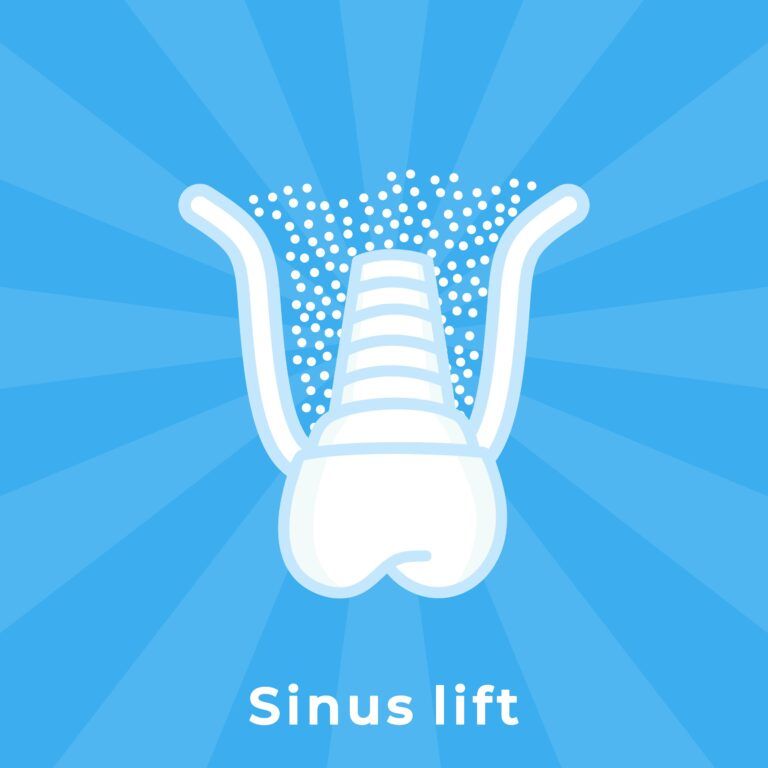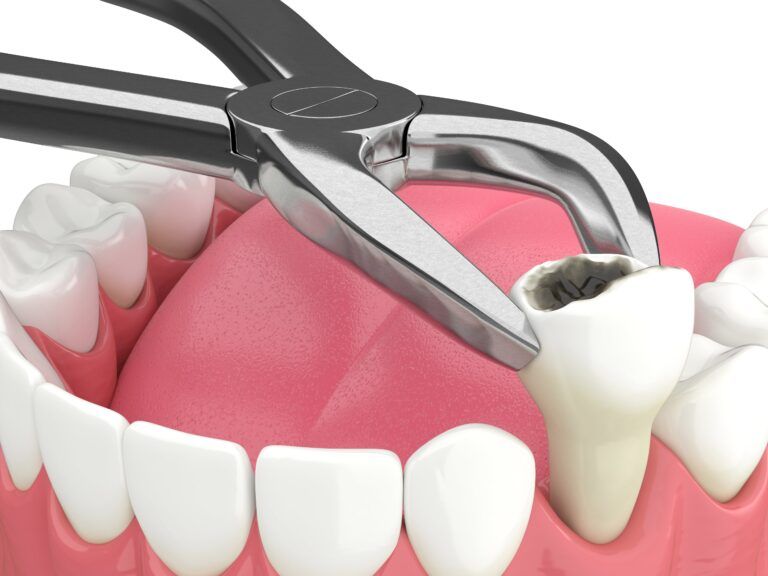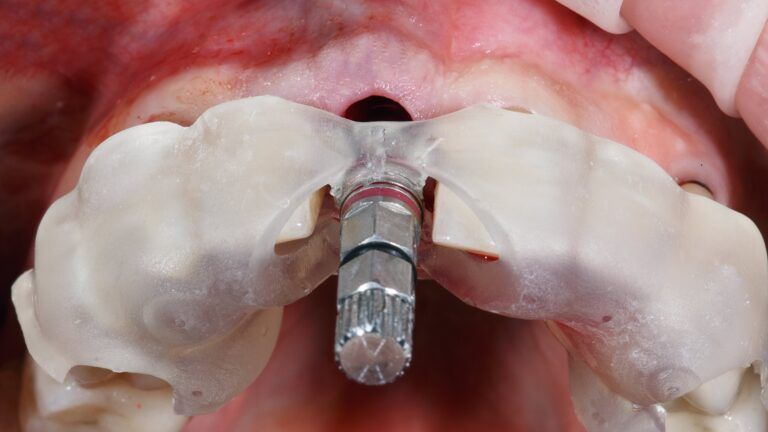Dental implants have revolutionized the field of restorative dentistry, offering a permanent solution for individuals with missing teeth. However, not all candidates possess the necessary bone density in their upper jaw to support these implants securely. This is where sinus lift surgery comes into play. Sinus lift surgery, also known as sinus augmentation, is a procedure that enhances the bone structure in the upper jaw, allowing for the successful placement of dental implants. In this article, we’ll delve into the details of sinus lift surgery, its importance, procedure, recovery, and benefits.
What is a sinus lift?

A sinus lift is a specialized procedure aimed at increasing bone volume in the posterior upper jaw area, specifically beneath the sinus cavity. This is essential because the bone in this region often becomes thin due to factors such as tooth loss, periodontal disease, or natural bone resorption. Without sufficient bone density, dental implants may not integrate properly or securely, leading to implant failure.
Types of Sinus Lift:
- Lateral Window Technique: In this traditional approach, an incision is made in the gum tissue, creating a small “window” in the bone. The membrane lining the sinus cavity is gently pushed upward, and bone graft material is placed beneath it to encourage new bone growth.
- Osteotome Technique: This minimally invasive method involves using specialized instruments called osteotomes to elevate the sinus floor. Bone graft material is then packed into the space created, promoting bone regeneration.
Who can benefit from a sinus lift?
A sinus lift procedure is recommended for individuals who lack sufficient bone density in the upper jaw’s posterior region, specifically beneath the sinus cavity. This procedure is often performed to prepare the area for successful dental implant placement. Here are the groups of people who can benefit from a sinus lift:
Individuals with Bone Loss:
- Tooth Loss: After tooth extraction or loss, the surrounding bone can gradually deteriorate due to lack of stimulation. This can result in insufficient bone volume for implant placement.
- Periodontal Disease: Advanced gum disease can lead to bone loss around teeth, affecting the stability of adjacent teeth and the bone’s density.
Candidates for Dental Implants:
- People who want to replace missing teeth with dental implants but have inadequate bone in the upper jaw.
- Dental implant candidates who require implant placement in the posterior maxilla (upper jaw).

Age-Related Bone Resorption:
- Older adults often experience natural bone loss over time, which can affect the jawbone’s ability to support dental implants.
Dental Trauma:
- Individuals who have experienced facial trauma, such as fractures or injuries to the upper jaw, may have compromised bone density that requires augmentation before dental implant surgery.
Genetic Factors:
- Some individuals might have genetic predispositions that result in thinner bone in certain areas of the jaw.
Anatomical Considerations:
- The natural anatomy of the sinus cavity can vary from person to person. Individuals with lower sinus cavities might have less bone available for implant placement.
Health Conditions:
- Certain medical conditions or medications can affect bone density and healing, making a sinus lift procedure necessary for successful implant placement.
Aesthetic and Functional Concerns:
- Individuals seeking to restore their smile and improve chewing and speaking abilities through dental implants may require a sinus lift to ensure implant stability and longevity.
Alternative Options:
- Some patients might have previously been told they are not suitable candidates for dental implants due to insufficient bone. A sinus lift can provide an opportunity for them to still receive implants.
It’s important to note that not everyone who requires dental implants will need a sinus lift. A thorough examination and assessment by a qualified dentist or oral surgeon, often involving X-rays or CT scans, are necessary to determine whether a sinus lift is necessary based on the individual’s specific bone anatomy and dental implant goals.
If you’re considering dental implants and suspect you might require a sinus lift, consult with a dental professional who specializes in implantology. They can provide personalized guidance and create a treatment plan tailored to your unique needs.
Benefits of Sinus Lift Surgery
- Implant Success: The primary benefit is that sinus lift surgery significantly increases the chances of successful dental implant placement in areas with insufficient bone.
- Improved Aesthetics and Function: Dental implants provide natural-looking, functional teeth that enhance your smile and enable comfortable eating and speaking.
- Preservation of Facial Structure: Dental implants prevent bone loss, helping maintain the shape and structure of your face.
- Long-Term Solution: With proper care, dental implants can last a lifetime, making them a durable investment.
The Procedure
Patient Evaluation:
Before proceeding with a sinus lift surgery, thorough patient evaluation is crucial. This typically involves:
- Clinical Examination: The dentist will assess your overall oral health, including the condition of your remaining teeth, gums, and any existing dental restorations.
- X-rays and CT Scans: These imaging techniques help determine the amount of existing bone and the proximity of the sinus cavity.
Anesthesia:
On the day of the surgery, local anesthesia or conscious sedation is administered to ensure you are comfortable and pain-free throughout the procedure.
Incision:
The dentist begins by making a small incision in the gum tissue near the area where the implant will be placed. The location of the incision depends on the specific technique used for the sinus lift.
Access to Sinus Cavity:

There are two main techniques for accessing the sinus cavity:
- Lateral Window Technique: In this method, a small “window” is created in the bone of the upper jaw, exposing the sinus membrane. The membrane is gently lifted, and bone graft material is placed beneath it.
- Osteotome Technique: With this minimally invasive approach, specialized instruments called osteotomes are used to elevate the sinus floor. Bone graft material is then introduced into the space created.
Bone Graft Placement:
Bone graft material is carefully inserted into the space beneath the sinus membrane. This graft material can be of various types, such as synthetic bone substitutes, your own harvested bone (autogenous graft), or bone obtained from a tissue bank (allogeneic graft).
Graft Stabilization:
The bone graft material serves as a scaffold for new bone growth. It gradually integrates with your existing bone, promoting the development of a stronger, more substantial bone structure.
Closure:
Once the bone graft is in place, the incision is stitched closed. Sutures are used to secure the gum tissue over the surgical site.
Healing Period:
Following the surgery, a healing period is necessary to allow the bone graft to fuse with the existing bone. This process, known as osseointegration, typically takes several months.
Dental Implant Placement:
After the bone has healed and gained sufficient density, dental implant placement can be scheduled. The newly augmented bone provides a secure foundation for the implant to integrate effectively.
Final Restoration:
Once the dental implant has integrated with the bone, a custom-made dental crown, bridge, or denture can be attached to the implant, restoring both aesthetics and function.
Recovery and Aftercare
After sinus lift surgery, you’ll be provided with post-operative instructions to ensure a smooth recovery. These may include:
- Pain Management: Over-the-counter or prescribed pain medications can help manage discomfort.
- Oral Hygiene: Maintaining oral hygiene is crucial. Your dentist might recommend using a gentle mouthwash and avoiding vigorous brushing near the surgical site.
- Diet: Initially, stick to soft foods and avoid hot or spicy items that could irritate the surgical site.
- Follow-up Visits: Regular follow-up appointments allow your dentist to monitor the healing process and make any necessary adjustments.
In Conclusion
Sinus lift surgery plays a pivotal role in making dental implants a viable option for individuals with diminished bone density in their upper jaw. This procedure, combined with advancements in dental technology, has opened doors to restoring smiles and oral function for many. If you’re considering dental implants but have concerns about bone density, consulting with a qualified dentist who specializes in implantology and oral surgery is essential. With the benefits of sinus lift surgery, you can look forward to a confident and functional smile that stands the test of time.

Irfan Atcha, DDS, DICOI, DADIA at New Teeth Chicago Dental in Chicago, Illinois is a board-certified general dentist and a nationally recognized expert in dental implants, cosmetic dentistry, and sedation dentistry. Dr. Atcha is now serving patients in Naples, Bonita Springs and SW FL area with All-on-4 implants, teeth-in-a-day, same day dental implants and the complex zygomatic dental implants for the no-jaw bone solution approach. To schedule a consultation please email Dr. Atcha at teethforyou@gmail.com.




